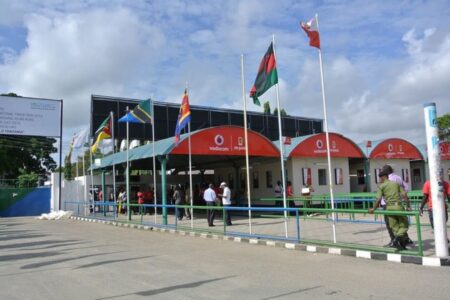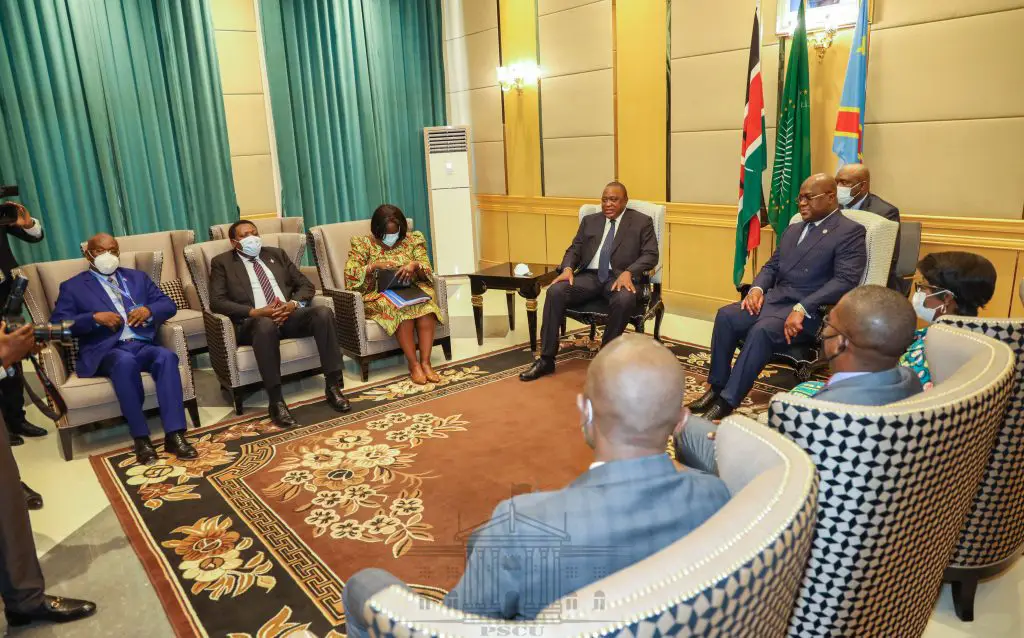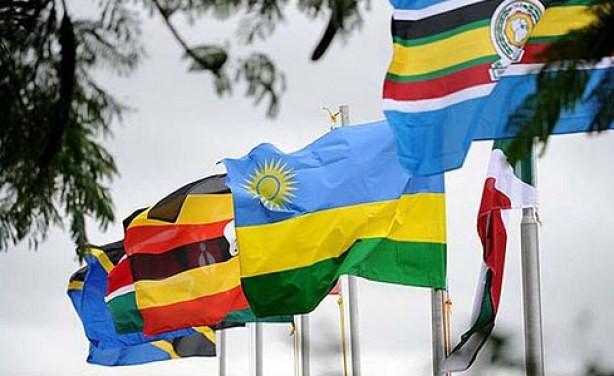- Africa’s new dawn: the rising role of digital and AI in agriculture
- Can Dangote Refinery Transform Africa Energy Ambition
- Gallup Survey: 80 per cent of Kenyan Workers Are Disengaged and Seek New Opportunities
- Madagascar Man Freed from 5KG Tumor After 15-Year Struggle
- How women in Africa are perceived and treated
- Sugar consumption in Kenya to Increase to 1.23 Million Tonnes
- Can Somalia and Turkey Oil deal Bring Change in Somaliland
- Remittances to Kenya dropped to $371.6 million in June, marking a six month low
Browsing: Trade in East Africa
- Tanzania is using Sabasaba trade expo to foster the country’s industrial might.
- This year, over 180 foreign companies including some from China took part in the exhibition.
- Overall, Tanzania’s trade with the outside world is marked by export of minerals and agricultural produce.
Across Tanzania, no exhibition can outmatch the Sabasaba trade expo, a platform that the East African country is using every year to showcase investment potential.
“Sabasaba” which translates to “seventh day” in Swahili, denotes Dar es Salaam International Trade Fair (DITF) tradition of going down during the first week of July, typically starting on the 7th of the month. The expo serves as a platform for local and international businesses to showcase their products and services, fostering trade and economic development in the region.
Sabasaba trade expo promoting industries
It attracts a diverse range of exhibitors and visitors from various industries, including agriculture, manufacturing, technology, tourism, and …
It is obvious that the DRC’s desire to become a member of the EAC is to tap into the benefits of regional trade, i.e. an expanded market of 300 million people, and to increase Foreign Direct Investment (FDI) through its membership in the EAC bloc. DRC’s capital market remains underdeveloped and consists mainly of the issuance of treasury bonds.
There is no stock exchange in the country and only a small number of private equity firms are actively investing in the mining industry. There are hardly any institutional investors in the DRC except for an insurance company and a state pension fund. The Central Bank of Congo (BCC), developed a market for short-term bonds, which are bought and held by local Congolese banks.
The absence of a domestic debt market has meant that the fixed-rate market is limited to government-issued treasury bonds with maturities of up to 28 days traded …
Covid-19’s impact on transportation in East Africa has been the greatest impediment to trade in the entire region. Due to the multiple medical tests that drivers are forced to undertake, the wait period has been a critical hinderance on goods being delivered on time. This has drastically changed much of the supply of goods and services from the two key ports of the region, namely the Mombasa Port in Kenya and the Dar es Salaam Port in Tanzania.
With the global pandemic continuing its tirade, no corner in the world is spared. Trade in Eastern Africa has severely been affected by internal and regional barriers inhibiting competitiveness of regional goods and services.
Prior to the outbreak of COVID-19, for example, the port of Mombasa, the busiest in East Africa, handled approximately 27 million tonnes of cargo and processing more than one million containers. Following the pandemic, however, the …
Before the economic shock of COVID-19, world merchandise trade in 2019 was already slowing down due to trade tensions and decelerating economic growth.
According to the World Trade Organization (WTO), “the dollar value of world merchandise exports in 2019 fell by 3% to US$18.89 trillion”. Overall, world trade is expected to continue falling and will range between 13% and 32% in 2020, as the health crisis continues to disrupt world economies.
In addition to the economic disruption, so far, Coronavirus has left more than 200,000 people dead across the world, more than the fatalities recorded in the World War 11, as observed by the UN Secretary–General, Antonio Gueterres. The effects of the ‘Great Lockdown’ as perceived by the International Monetary Fund (IMF), is far beyond the effects of the 1930s Great Depression. With exception of businesses dealing in pharmaceuticals, life-saving amenities …
The value of intra-trade among East African Community (EAC) states increased to $5.98 billion in 2018 from $5.46 billion in 2017, accounting for a 9.4 per cent growth.
According to the East African Community Trade and Investment Report (2018), all EAC member states except for Burundi recorded growth in trade with their regional counterparts.
Uganda, Tanzania, Rwanda, South Sudan and Kenya’s combined exports to the East African Community and Southern African Development Community regions amounted to $3.1 billion and $1.9 billion in 2018 respectively showed a report prepared by the EAC Secretariat.
In 2015 and 2016, intra-EAC trade was in the negative zone. In 2018, Burundi’s total trade with other countries in the region fell by 11 per cent to $150.9 million from $162.6 million in 2017.
Kenya’s total trade with EAC partner countries rose to $1.95 billion in 2018 from $1.86 billion in 2017 an increase of 4.7 …







